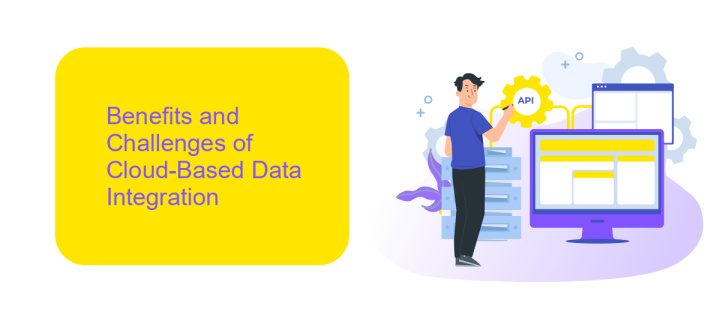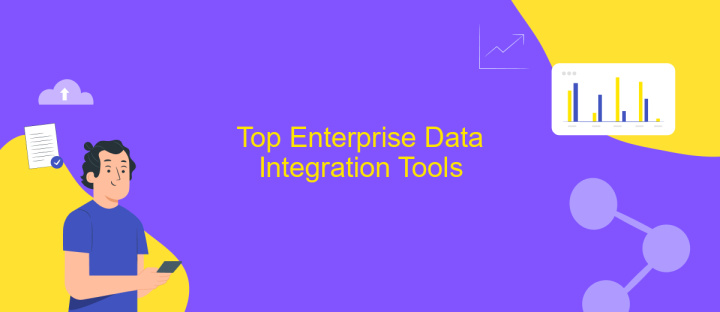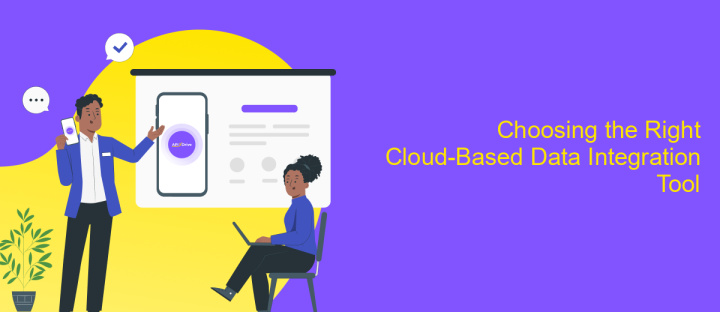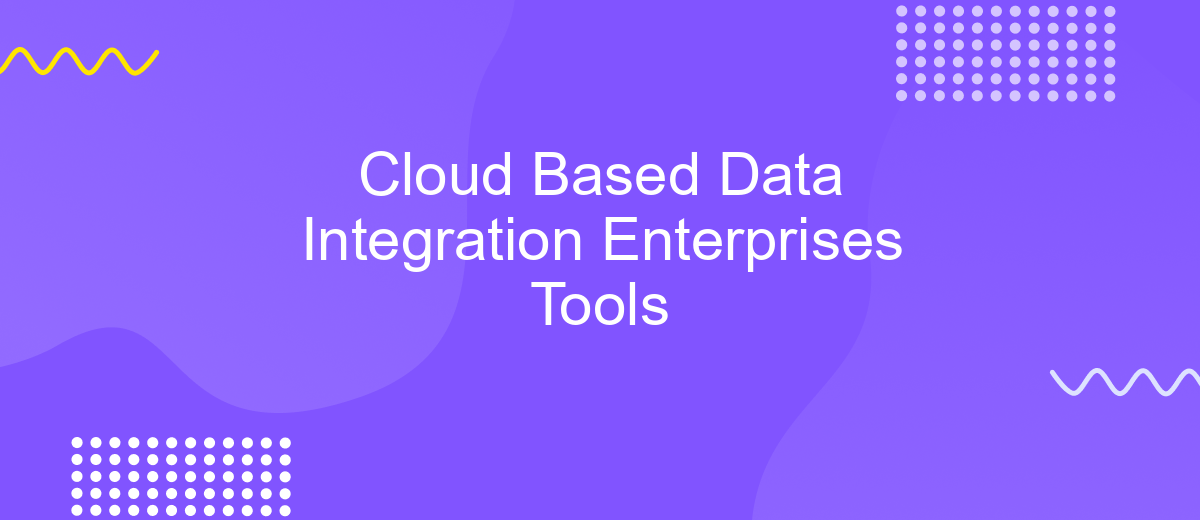Cloud Based Data Integration Enterprises Tools
In today's digital era, businesses are increasingly turning to cloud-based data integration tools to streamline operations and enhance decision-making. These advanced platforms offer seamless connectivity between disparate data sources, enabling real-time analytics and improved data management. This article explores the top cloud-based data integration tools, highlighting their features, benefits, and how they can transform enterprise data strategies.
Introduction to Cloud-Based Data Integration
In today's rapidly evolving digital landscape, the need for seamless data integration has become more critical than ever. Cloud-based data integration offers a modern solution to this challenge, enabling organizations to connect diverse data sources, streamline workflows, and enhance decision-making processes. By leveraging the power of the cloud, businesses can achieve greater scalability, flexibility, and cost-efficiency compared to traditional on-premises solutions.
- Scalability: Easily scale up or down based on data volume and business needs.
- Flexibility: Integrate a wide range of data sources, including databases, applications, and IoT devices.
- Cost-Efficiency: Reduce upfront infrastructure costs and pay only for what you use.
- Real-Time Processing: Enable real-time data integration and analytics for timely insights.
- Enhanced Security: Benefit from advanced security measures and compliance standards provided by cloud service providers.
Embracing cloud-based data integration tools allows enterprises to stay competitive in an increasingly data-driven world. These tools not only simplify the integration process but also provide the agility needed to adapt to changing business environments. As a result, organizations can focus on deriving actionable insights from their data, driving innovation, and achieving strategic objectives.
Benefits and Challenges of Cloud-Based Data Integration

Cloud-based data integration offers numerous benefits, including scalability, cost-efficiency, and real-time data access. Enterprises can easily scale their data integration processes to meet growing demand without significant infrastructure investments. Additionally, cloud solutions eliminate the need for costly on-premises hardware, reducing overall IT expenses. With real-time data access, businesses can make informed decisions quickly, enhancing operational efficiency and competitiveness. Tools like ApiX-Drive simplify the integration process by providing user-friendly interfaces and pre-configured connectors, streamlining the connection of various data sources and applications.
However, cloud-based data integration also presents several challenges. Security concerns are paramount, as sensitive data is transmitted and stored off-site, increasing the risk of breaches. Ensuring compliance with data protection regulations can be complex, especially for enterprises operating in multiple jurisdictions. Additionally, integrating legacy systems with modern cloud-based solutions can be technically challenging and time-consuming. Despite these challenges, the benefits of cloud-based data integration often outweigh the drawbacks, making it a compelling choice for forward-thinking enterprises.
Top Enterprise Data Integration Tools

In the rapidly evolving landscape of data management, selecting the right cloud-based data integration tool is crucial for enterprises aiming to streamline their operations and enhance data-driven decision-making. These tools offer robust capabilities to connect, transform, and manage data across diverse sources, providing seamless integration and real-time analytics.
- Informatica Cloud Data Integration: Known for its comprehensive data integration capabilities, Informatica supports a wide range of data sources and offers advanced data transformation and cleansing features.
- Microsoft Azure Data Factory: This tool provides a scalable and flexible solution for data integration, enabling enterprises to create, schedule, and orchestrate data workflows efficiently.
- Talend Cloud Integration: Talend offers an open-source platform that simplifies complex data integration tasks with its user-friendly interface and extensive connectivity options.
- IBM Cloud Pak for Data: A unified data and AI platform, IBM Cloud Pak for Data integrates data across multicloud environments, ensuring secure and efficient data management.
- SnapLogic: This intelligent integration platform automates data pipelines and supports a wide array of applications and data sources, facilitating rapid and scalable data integration.
Choosing the right data integration tool depends on the specific needs and infrastructure of an enterprise. Each of these tools offers unique features and advantages that can significantly enhance the efficiency and effectiveness of data management strategies.
Choosing the Right Cloud-Based Data Integration Tool

Choosing the right cloud-based data integration tool is crucial for ensuring seamless data flow and efficient operations within an enterprise. With numerous options available, it's essential to consider factors that align with your organizational needs and goals. Start by evaluating the specific data sources you need to integrate and the complexity of your data workflows.
Another important aspect is the scalability of the tool. As your business grows, your data integration needs will evolve. Therefore, selecting a tool that can scale with your organization is vital. Additionally, consider the ease of use and the learning curve associated with the tool, as this will impact the speed of implementation and adoption within your team.
- Compatibility with existing systems
- Scalability and flexibility
- Security and compliance features
- User-friendly interface
- Cost-effectiveness
By carefully considering these factors, you can select a cloud-based data integration tool that not only meets your current requirements but also adapts to future challenges. This strategic approach will help ensure long-term success and efficiency in managing your enterprise data.
Future Trends in Cloud-Based Data Integration
As cloud technology continues to evolve, the future of cloud-based data integration is set to be driven by advancements in artificial intelligence and machine learning. These technologies will enhance the ability to automate complex data integration processes, making it easier for enterprises to manage and analyze vast amounts of data efficiently. Real-time data integration will become more prevalent, allowing businesses to make faster, data-driven decisions and respond to market changes with agility.
Moreover, tools like ApiX-Drive will play a crucial role in simplifying the integration process. By offering user-friendly interfaces and pre-configured connectors, these platforms will enable businesses to integrate various applications and data sources without requiring extensive technical expertise. This democratization of data integration will empower smaller enterprises to leverage cloud-based solutions effectively, fostering innovation and competition across industries.
FAQ
What is cloud-based data integration?
How does cloud-based data integration benefit enterprises?
What are the common features of cloud-based data integration tools?
How can enterprises ensure data security in cloud-based data integration?
What are some challenges associated with cloud-based data integration?
Apix-Drive is a universal tool that will quickly streamline any workflow, freeing you from routine and possible financial losses. Try ApiX-Drive in action and see how useful it is for you personally. In the meantime, when you are setting up connections between systems, think about where you are investing your free time, because now you will have much more of it.

